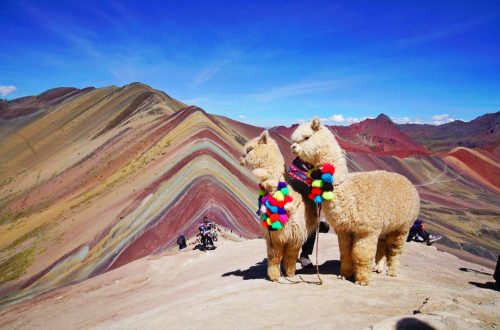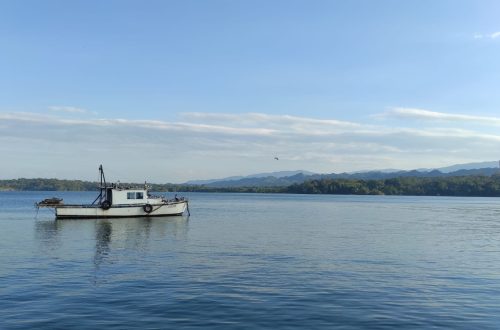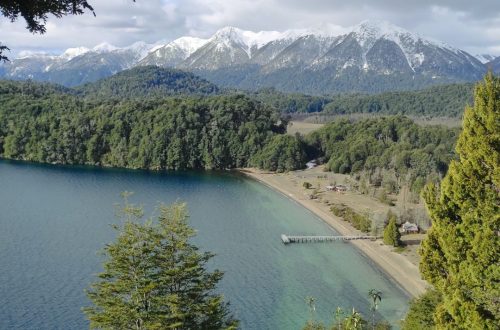
Mastering the Inca Trail: Solo Female Travelers Edition
If you are an avid hiker or an enthusiastic traveller, you have to have heard about the Inca Trail in Peru. The Inca Trail is South America’s most famous hiking route! Located in southern Peru, within the Historic Sanctuary of Machu Picchu, this ancestral 43-kilometer journey traverses part of the original Inca road network (the Qhapaq Ñan), which connected Cusco with the Andes and jungle.
If you’ve been travelling solo for a while, you know that as a woman, it always requires a bit more planning or, at least, more things to consider. But we do it anyway! Right? I’m happy you are reading this because it means you are ready to tackle one of the world’s most iconic treks!
We need to get serious, though; we are not talking about walking long distances on flat surfaces at sea level. The classic 4-day Inca Trail covers 43 kilometres of ancient Inca stone paths, crosses two mountain passes above 4,000 metres, and culminates at Machu Picchu at sunrise. This means about 25% accumulated positive elevation gain, temperatures ranging from -5°C at dawn to 25°C at midday, and a maximum altitude of 4,215 meters at Warmiwañusca Pass.
Let’s dive into the preparations the Inca Trail experts suggest!
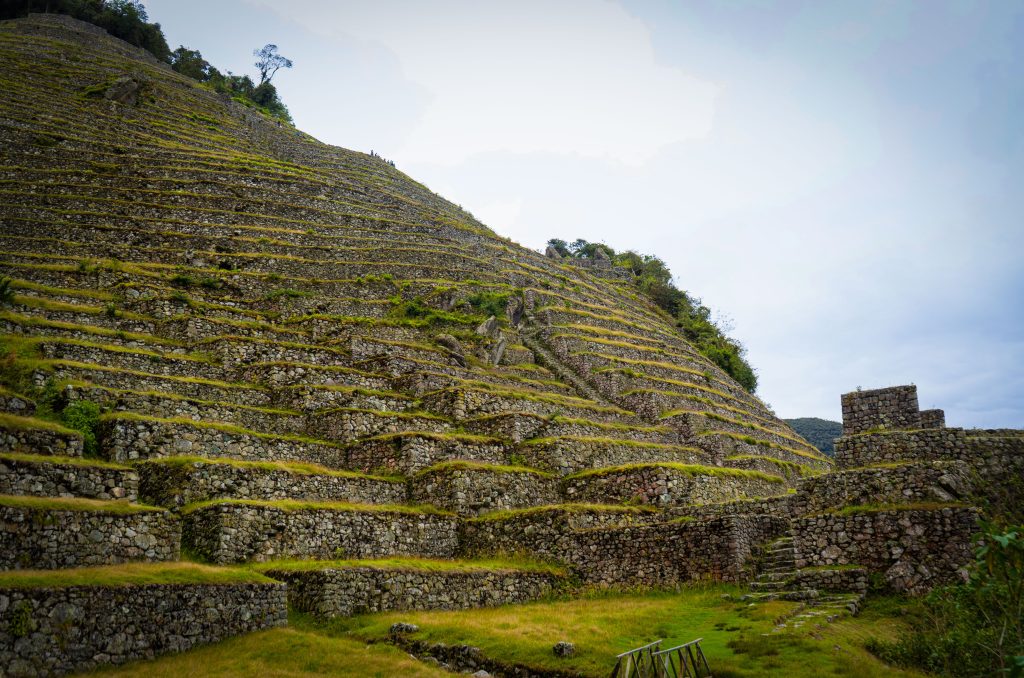
Physical preparation is non-negotiable
You should begin your training at least three months before the trip. The Inca Trail doesn’t forgive improvisation, especially on the second day, when you ascend 1,200 meters of elevation gain to Dead Woman’s Pass.
Suggested training routine
| Week | Main Activity | Intensity |
| 1-4 | Long walks (8-12 km), stairs | 3 times per week |
| 5-8 | Trekking with 8-10 kg backpack | 4 times per week |
| 9-12 | Real simulation: 2 consecutive days of hiking | Sustained pace, with real weight |
Menstrual Cycle consideration!
It is recommended that you plan the Inca Trail for the first half of your menstrual cycle, as this reduces the risk of altitude-related issues.
Acclimatisation
When it comes to non-negotiables, acclimatisation is not up for debate! Cusco is at 3,400 meters—Machu Picchu at 2,400. The Inca Trail reaches 4,215 meters. These numbers represent partial oxygen pressures that your body must process. Proper acclimatisation requires a minimum of three days in Cusco before embarking on the trek.
Suggested acclimatisation protocol
- Constant hydration (4-5 litres daily)
- No alcohol consumption!
- Short adaptation walks. The Sacred Valley (Pisac, Ollantaytambo) offers ideal intermediate altitudes for this process.
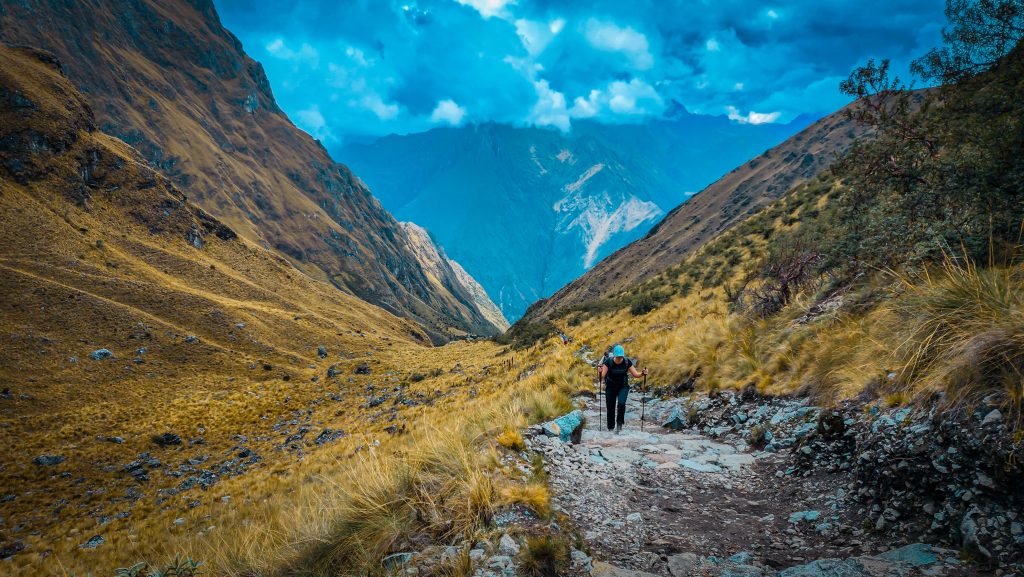
Inca Trail packing list
If you’re into multi-day hiking, you already know that what matters most is the weight you carry in your backpack. And even more so when we’re talking about steep terrain and high altitude! Every gram counts, and there’s no room for “just in case” items.
You should know that porters can carry up to a maximum of 20 kilos — and that includes the tent, food, and cooking gear. Your personal backpack shouldn’t exceed 8 kg. The general recommendation is to carry only 10% of your body weight. So, if you weigh around 60 kilos, your backpack should ideally weigh 6 kg.
Footwear: Trekking boots with at least 100 kilometres of prior use. New boots guarantee blisters at kilometre 15. Recommended brands include Salomon or Merrell, featuring a waterproof membrane.
Layering system: Thermal variations are extreme—Merino wool base layer, mid-layer fleece, outer waterproof jacket. Cotton is forbidden because it retains moisture and loses its insulating capacity.
Sleeping bag: Minimum technical specification: -10°C comfort rating. Downbags are lighter but lose insulation when wet. Synthetic ones are heavier but maintain thermal properties when damp.
Women-specific items: a menstrual cup (more practical than tampons in field conditions), biodegradable wet wipes, spare underwear.
GPS or satellite locator device: Cell service is non-existent in most of the routes.
What makes the Inca Trail ideal for female solo travellers
Access to the Inca Trail is strictly controlled, as it allows only 500 people per day, all of whom are accompanied by certified guides. This regulation creates a relatively safe environment for solo women.
Travelling solo provides you with several advantages: you walk at your own pace, listening to your body and connecting with the surroundings without any distractions. Moreover, you get to create more human connections with your group mates! It’s commonly known that when travelling with friends or family, you tend to stick with your own group rather than interacting with strangers.
What to expect when hiking the Inca Trail
Guides specialised in the Inca Trail handle mixed group dynamics, which range in size from 8 to 16 people. Their function includes managing different paces, resolving minor conflicts, and basic medical supervision. A good guide identifies altitude sickness signs before the hikers themselves.
The night experience: campsites and rest
The three nights are spent at established campsites: Wayllabamba (3,000m), Pacaymayo (3,600m), and Wiñay Wayna (2,650m). Facilities are basic: dry toilets, limited running water, and no electricity. Please note that campsites do not offer absolute privacy, as tents are typically arranged in a group formation. You could potentially request a perimeter campsite location, but it is not guaranteed.
The culminating day: Intipunku and Machu Picchu
The fourth day begins at 3:30 AM, and the goal is to reach Intipunku (Sun Gate) for sunrise over Machu Picchu. This final walk features a total of 1,200 Inca stone steps, all in total darkness.
Pro tip: Take it easy — no need to rush! Keeping a steady pace is advisable as accumulated exhaustion can lead to an unwanted fall.
Intipunku is typically reached between 6:00 and 6:30 AM. Are you ready for this breathtaking view? Can you picture yourself there already? The first glimpse of Machu Picchu from Intipunku is undeniably powerful. The 400-meter drop to the site creates a dramatic view that you have to see for yourself!
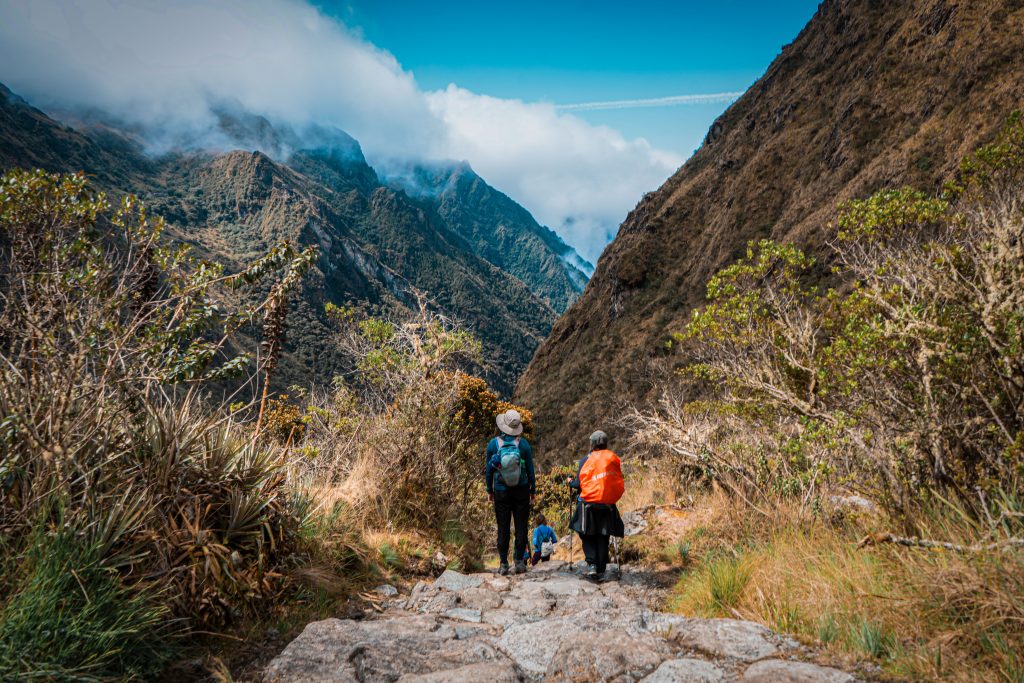
Inca Trail etiquette
The Inca Trail is an ancient Inca ceremonial route with a continuous history spanning 500 years. Local communities maintain a spiritual connection with this territory. Respect includes following your guide’s protocols, refraining from removing archaeological elements (including stones), and keeping silent at ceremonial sites.
Porters are Quechua-speaking people from high Andean communities. Their work includes carrying up to 20 kilos over rough terrain for four days. The standard tip is 20-25 soles per day per porter.
Last but not least
The Inca Trail is not an adventure you embark on just because you need a sports challenge. We’re talking about pushing personal limits, both mentally and physically, and achieving a deep spiritual connection. You will definitely return as a completely different person than the one you were before the hike.
Booking advise!
Be aware that reservations must be made 6-8 months in advance, especially during the dry season (May to September), as spots sell out super fast!
Pro tip: Book your 4-day Inca Trail hike with Local Cusco agencies rather than international companies. Local operators are familiar with the territory, employ certified local guides and maintain ethical standards with porters.
Hiking the Inca Trail as a female solo traveller is a life-changing experience, one you will never forget.
Happy hiking!
Tengo un podcast también ¿sabías? Podés escucharlo en Spotify , Apple Podcast, , Google Podcast, y Youtube
¿Querés descuentos para tu viaje?
Probá tu seguro especial para nómadas digitales con SafetyWings: Quiero mi descuento
¿Te pinta hacer un voluntareado? Worldpackers
¿Necesitás abrirte una cuenta en USD? Wise
¿Necesitás tramitar una VISA? Hacelo por Ivisa
*Este artículo contiene links de afiliaciones


